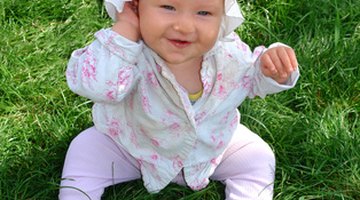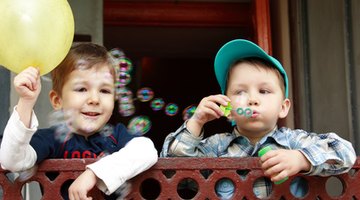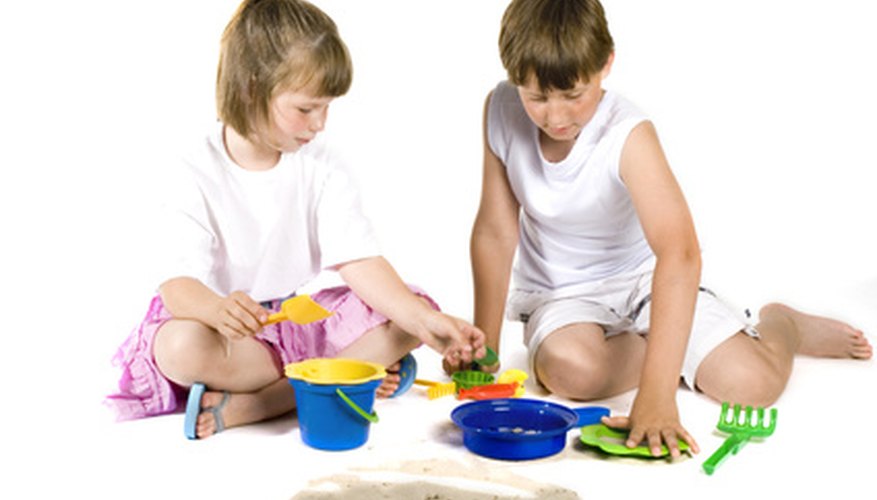Researcher Mildred Parten categorised the stages of children's play in 1932. As of 2010, Parten's stages continue to serve as the standard means of describing a child's developmental progress in social play. Children given the opportunity to interact with other children advance naturally from one stage to the next. Identifying a child's stage of play allows parents and caregivers to support the child's growth and progression into the next stage.
Onlooker Behavior

Very young children typically exhibit onlooker behaviour. A child demonstrating onlooker behaviour observes other children at play, but does not join in play. Instead the child follows an adult, talks to other children or simply sits and listens. For example, an infant in the onlooker stage might turn her head to follow another child playing with a ball. The infant does not play with or reach toward the ball and remains watching contentedly.
- Very young children typically exhibit onlooker behaviour.
- A child demonstrating onlooker behaviour observes other children at play, but does not join in play.
Solitary Play

Older infants and toddlers engage in solitary play. In the solitary stage, a child plays with toys alone and with some degree of focus. The child pays little attention to the play of other children, although he may occasionally interact by taking a toy. A toddler demonstrating solitary play might repeatedly fill and empty a bucket with wooden blocks.
- Older infants and toddlers engage in solitary play.
- A toddler demonstrating solitary play might repeatedly fill and empty a bucket with wooden blocks.
Parallel Play

Toddlers and two-year-olds often demonstrate parallel play. Children exhibiting parallel play sit near each other and use the same types of toys. The focus of each child remains on her own individual play. Children talk aloud to each other, though not about the same topic. For example, one child dressing a baby doll might sit near another child feeding a doll pretend food. The first child might announce the baby wears a pink hat, while the second child might reply that the grapes are all gone.
- Toddlers and two-year-olds often demonstrate parallel play.
- Children exhibiting parallel play sit near each other and use the same types of toys.
Associative Play

Associative play occurs during the early preschool years. During associative play, children interact frequently and share materials. Children display interest in the play of others but maintain distinctly different storylines and themes. Preschoolers demonstrating associative play might work on individual art projects side-by-side. The children share materials but create individual products and narrate different stories about their artwork.
- Associative play occurs during the early preschool years.
- During associative play, children interact frequently and share materials.
Cooperative Play

Older preschoolers typically engage in cooperative play. Cooperative play involves a high degree of complexity. Children share materials, work together to create a theme and storyline for the play, adopt roles to carry out the play and assign roles to others. For example, children in the cooperative stage might bring all the trucks together to play mechanic shop. Children assign each other trucks to play and work together to designate trucks as "the fast one" or "the flying one."
- Older preschoolers typically engage in cooperative play.
- Children assign each other trucks to play and work together to designate trucks as "the fast one" or "the flying one."
